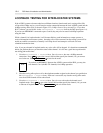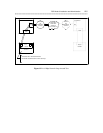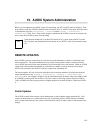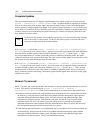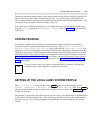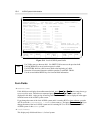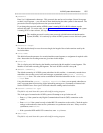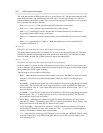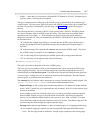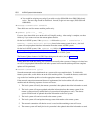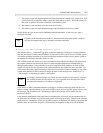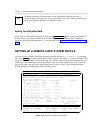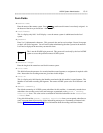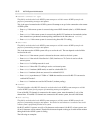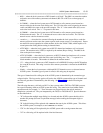13-6 AUDIX System Administration
________________________________________________________________________________________________
________________________________________________________________________________________________
________________________________________________________________________________________________
This is the data rate the AUDIX system will try to use for the test call. The rate entered depends on the
extent of the test (that is, the facilities involved in the loop). The first test will likely be a call to the
switch and back to the AUDIX system. Or in the case of a direct RS-232 connection, a call out on one
RS-232 channel and back in on the other.
— Enter 56000 or 64000 if the system has only DCP connections to the switch.
— Enter 64000 if the system has only direct connections to other systems.
— Enter 19200 if modems are used for switched RS-232 and the modems are set in Microcom
Networking Protocol (MNP) mode (variable rate).
— Enter 9600 if modems are used for modem pooling or for switched RS-232 at a fixed rate of 9600
bps.
— Enter 19200 (asynchronous) if 7400A or 7400B data modules are used for switched RS-232
converted to DCP mode 2.
• channel
This field is only used when this system calls itself for testing purposes.
This field is used to specify an RS-232 channel (5 or 6) to be used to originate the test call. Whenever
both RS-232 channels are connected in the same manner (both dedicated or both switched), this field
can be left blank. If blank, the AUDIX system will choose one automatically.
• dial string
This field is only used when this system calls itself for testing purposes.
On R1V3 and R1V4 systems, zero (0) to 30 characters can be entered. On R1V5 or later systems, zero
(0) to 65 characters can be entered. Permissible characters depend on the type of switch and/or modem
through which the AUDIX system is dialing.
The following are a few examples of dial strings:
— 6000 — where the local system uses a DCP channel to call itself. The 6000 is an extension number
assigned to one of the local system network channels (RS-232 or DCP) or to a hunt group of
channels.
— 9+2346000 — where the local system uses a DCP channel to call itself by going through the central
office switch. The 234 is the office code assigned to the local switch, and 6000 is the same as the
previous example. The ‘‘9’’ is the central office (CO) access code at the local switch. The ‘‘+’’ is a
pause for dial tone.
— 8+7896000 — where the local system uses a DCP channel to call itself by going through the private
network switch. The ‘‘8’’ is the private network access code at the local switch. The 789 is the
private network code for the local switch.
— ATDT 6000 — where the local system uses an RS-232 channel and modem to call itself on the
other RS-232 channel. The attention code (ATDT) is required by the modem (Hayes dialing). The
6000 is the extension of the other RS-232 channel on this system.
— ATDT 9,2346000 — where the local system uses an RS-232 channel and modem to call itself on
the other RS-232 channel. the same local dialing area. The ‘‘,’’ is a pause for a certain number of
seconds. This number is defined in the modem manual.
— *23 — where the local system uses a DCP channel to call itself through a MERLIN II that is acting
as the DCP interface for a non-DCP switch. This string is used to dial a network channel of the
local system (port 23).



